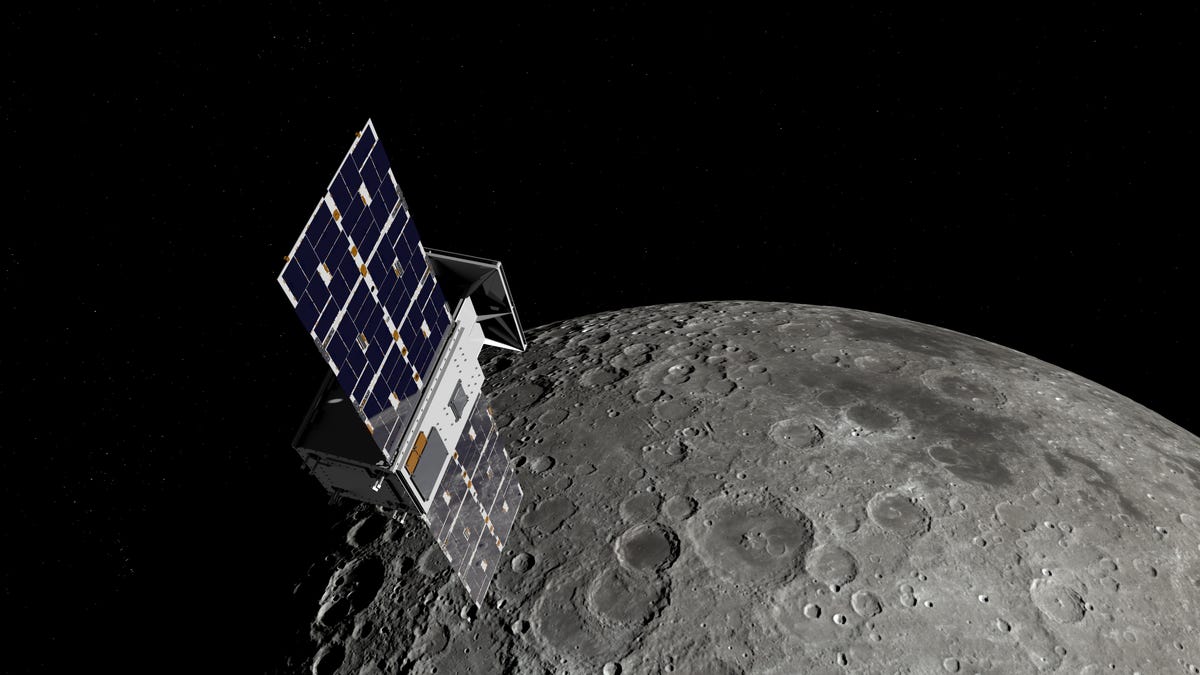Capstone, NASA's First Cubesat, Reaches Moon to Show Artemis the Way
The small satellite successfully entered a unique lunar orbit on Sunday.

An illustration of Capstone in lunar orbit.
While NASA eyes a planned launch of its first big Artemis moon mission early Wednesday, a tiny cubesat has officially arrived at the moon to serve as a pathfinder for upcoming stages of the agency's lunar program.
Capstone, short for the Cislunar Autonomous Positioning System Technology Operations and Navigation Experiment, is the size of a microwave oven and designed to circle the moon via an eccentric elliptical orbit (formally known as a near rectilinear halo orbit) that's never been flown by a spacecraft before.
Capstone is checking out the route in advance of NASA's plans to build a space station dubbed Gateway to ply the same orbit. The Gateway will be a waypoint for astronauts in the Artemis program, designed to get humans back on the moon, and it will house equipment and supplies for trips to the lunar surface.
The small satellite performed its initial orbit insertion maneuver, firing its thrusters at 4:39 p.m. PT Sunday to enter the special orbital path, which will allow it to circle the moon along a very fuel efficient route, relying instead on the gravitational pulls of the moon and Earth to stay on course.
It's expected to take about a week for mission engineers to confirm and fine-tune the path of Capstone after orbital insertion.
Capstone's journey to the moon has been tumultuous. The compact craft lost communications with Earth for a while in July and later suffered a major technical glitch that sent it tumbling out of control. The team was eventually able to get it oriented and back on track.
"What this Capstone team has overcome to date has been incredible," said Bradley Cheetham, principal investigator for Capstone and chief executive officer of Advanced Space, in a statement. Advanced Space is a Colorado company that owns and operates Capstone for NASA.
"Overcoming challenges is the purpose of a pathfinding mission," Cheetham added.
Capstone is scheduled to fire its thrusters only once every six and a half days to maintain its orbit, if that's needed. The goal is to stay in its orbit for at least six months so engineers can learn more about what will be required to keep Gateway and other spacecraft on such a path for many years.

